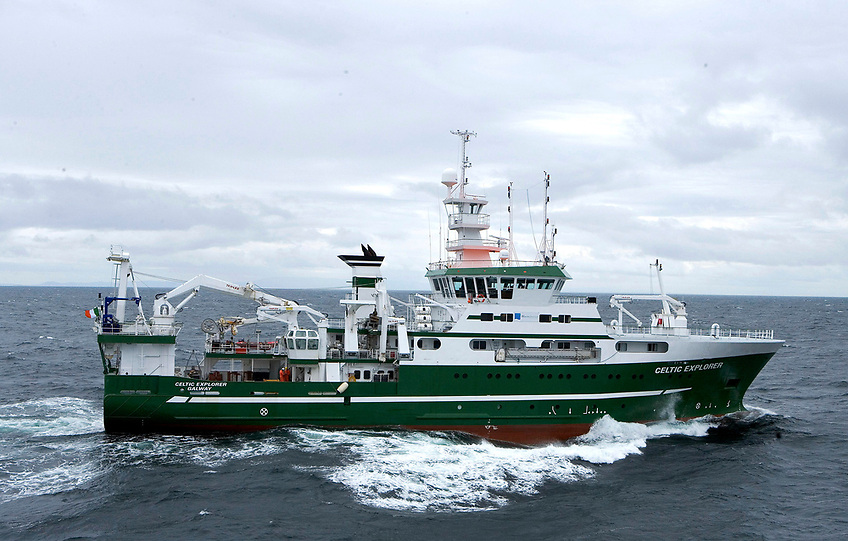Irish yacht Danú of Galway received a musical welcome when it berthed in south Galway bay last evening after a successful scientific, sailing and mountaineering expedition to the world’s largest and deepest fjord system in Greenland.
Musicians who play regularly with Danú’s skipper, Peter Owens, in Kinvara were out at Parkmore pier as the 13m (43ft) steel ketch berthed at high tide after a 3,300 nautical mile round trip.
 Local Kinvara musicians who play with Peter Owens, Danú of Galway skipper, welcoming the yacht at Parkmore pier Photo: Tony Maguire
Local Kinvara musicians who play with Peter Owens, Danú of Galway skipper, welcoming the yacht at Parkmore pier Photo: Tony Maguire
The group of independent adventurers had recorded some new mountaineering achievements in the remote Scoresby Sound fjord system on Greenland’s eastern coast.
The vessel’s crew also took daily sea and freshwater samples to assess the extent of microplastics spreading into Arctic waters and affecting marine life as part of a research project with Trinity College, Dublin’s Centre for the Environment.
 Irish yacht Danú of Galway returns to Kinvara Photo: Tony Maguire
Irish yacht Danú of Galway returns to Kinvara Photo: Tony Maguire
“Mesmerising” was how Owens, a University of Galway scientist, described the experience in the remote Greenland fjord system.
He was speaking en route in from the Aran island of Inis Mór where he and his crew, Richard Darley from Lymington in England and sailor and mountaineer Richard Church, spent Wednesday night.
Danú of Galway had left Kilrush, Co Clare, bound for Iceland and then Greenland, in late June with Owens, Darley and Paddy Griffin, also from Kinvara, on board.
They were joined on the Iceland-Greenland leg by Paul Murphy from Carran, Co Clare and Dublin mountaineer Sean Marnane.
Murphy travelled over from Clare last evening, joining Owens’s wife Vera Quinlan and two children, Lilian and Ruairí, along with family and friends.
 The Owens-Quinlan family are reunited at Parkmore Photo: Peter Owens
The Owens-Quinlan family are reunited at Parkmore Photo: Peter Owens
Just over two years ago, the Owens-Quinlan family had also berthed at Parkmore, after spending 14 months sailing, climbing and hiking around the Atlantic.
The Scoresby Sound expedition aimed to be self-sufficient in the Arctic, with a strict policy of “leave no trace” on the environment.
The crew experienced challenging weather during their passage north to Iceland with heavy Atlantic waves smashing one of the yacht’s windows en route, and they had to effect engine repairs in Husavik on Iceland’s north coast, which involved diving under the hull.
“We left Iceland for Turner island on the eastern coast of Greenland, and headed for the settlement of Ittoqqortoormiit where we got a rifle in case we needed it for polar bears”Owens said.
“When we sailed into Scoresby Sound, there was fog and we saw what looked like a bank of cloud ahead of us - but in fact it was pack ice,” Owens said.
Icelanders explained to the Irish crew that it was one of their most unsettled summers in 30 years.
“We spent the next few weeks in Scoresby Sound, visiting a series of remote anchorages and surveying each one around Milne land and Renland,”he said.
Owens and Sean Marnane, both experienced mountaineers, used kayaks to gain access to climbing routes.
They recorded a new route above the Skillebugt fjord anchorage on the south coast of Renland, and also reached the summit of Hermelintop, a 1172m-high peak with a commanding view of the confluence of three ice choked fjord systems.
Danú then circumnavigated Milne Land, where it encountered its last bit of concentrated ice which was “constantly cracking, forming changing and emitting big, loud bangs”, Owens recalled.
When the crew identified a weather window, they returned to the Ittoqqortoormiit settlement to leave back the rifle – which they didn’t have to use.
The crew achieved “everything we set out to do, in spite of the challenges en route “, Owens said.
Easterly winds slowed their return from Iceland, and they arrived off Inishbofin several days ago.
The fresh and sea water samples will be sent to TCD for analysis, and Owens expects results of any microplastic evidence could be available very soon.
Owens has paid tribute to his crew, family and friends for their support, and to the expedition sponsors - the Gino Watkins Arctic Club awards, the Ocean Cruising Club challenge grant and Mountaineering Ireland.
































































